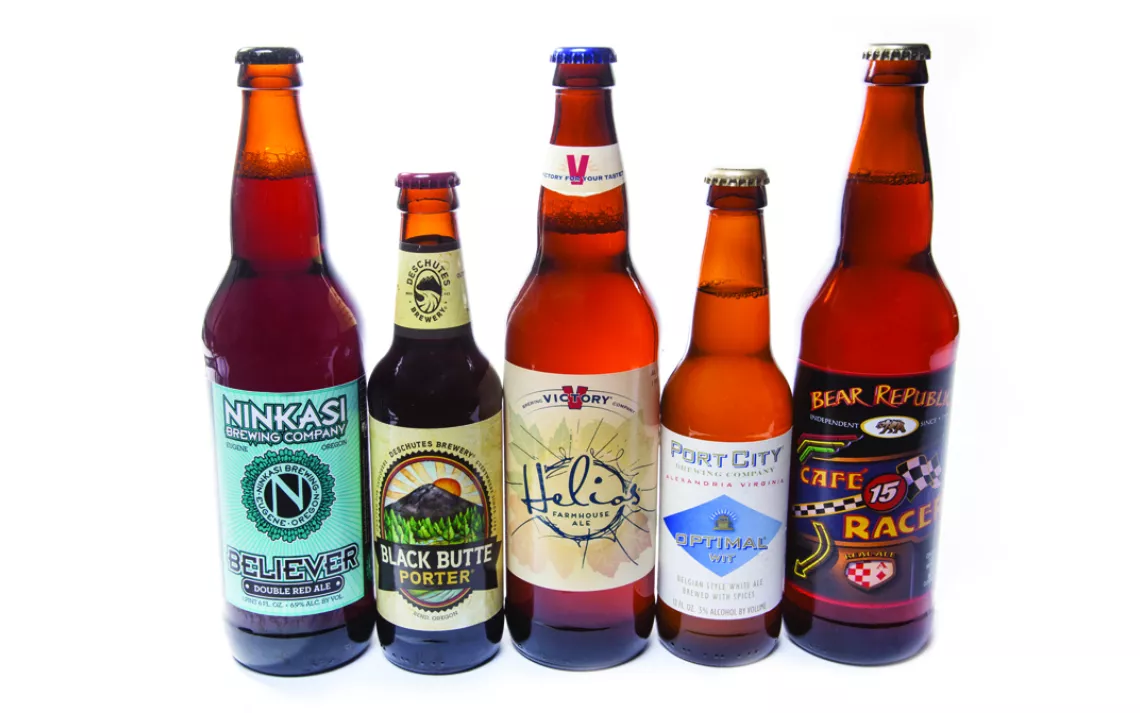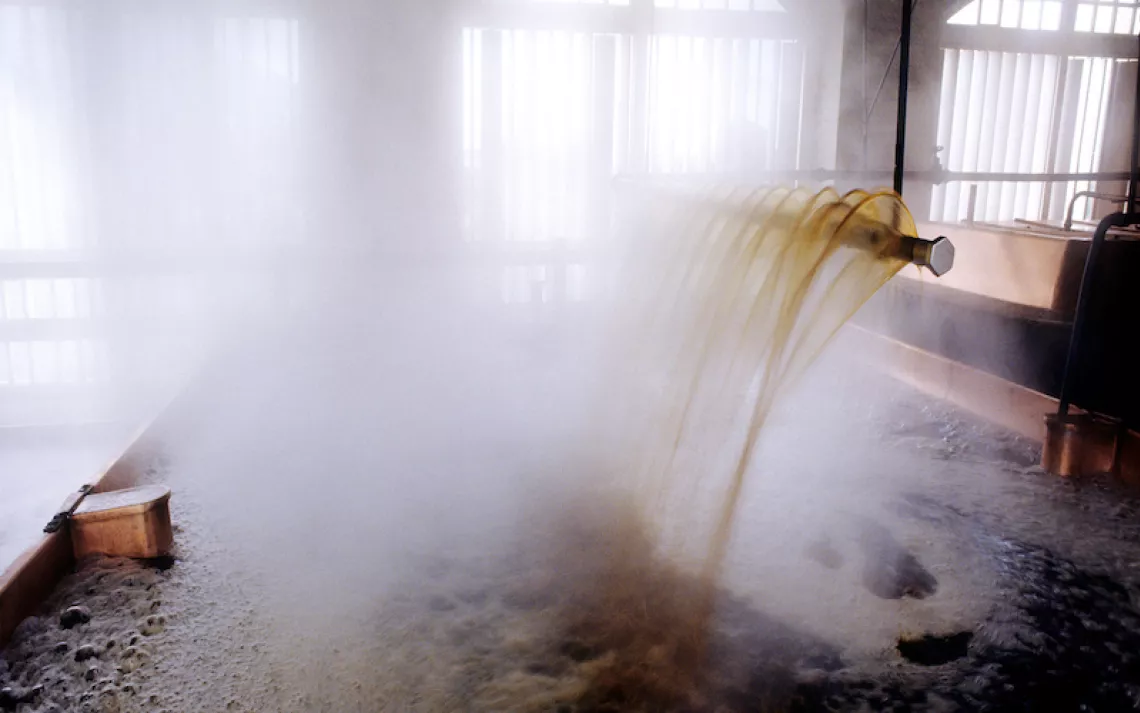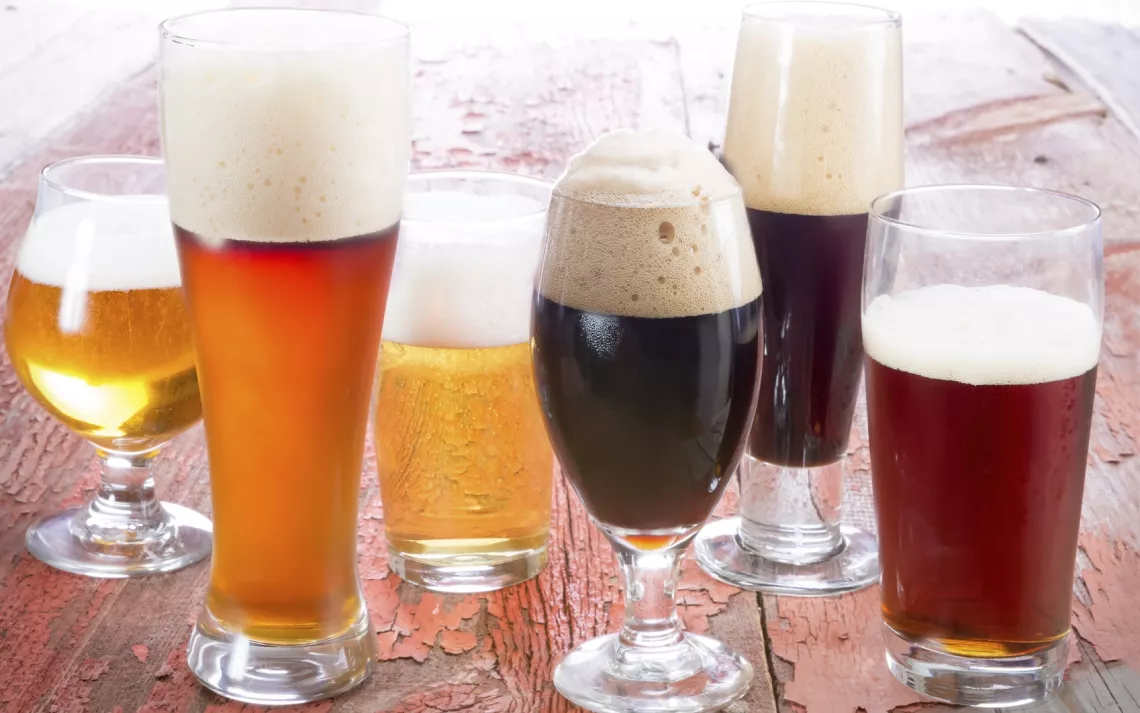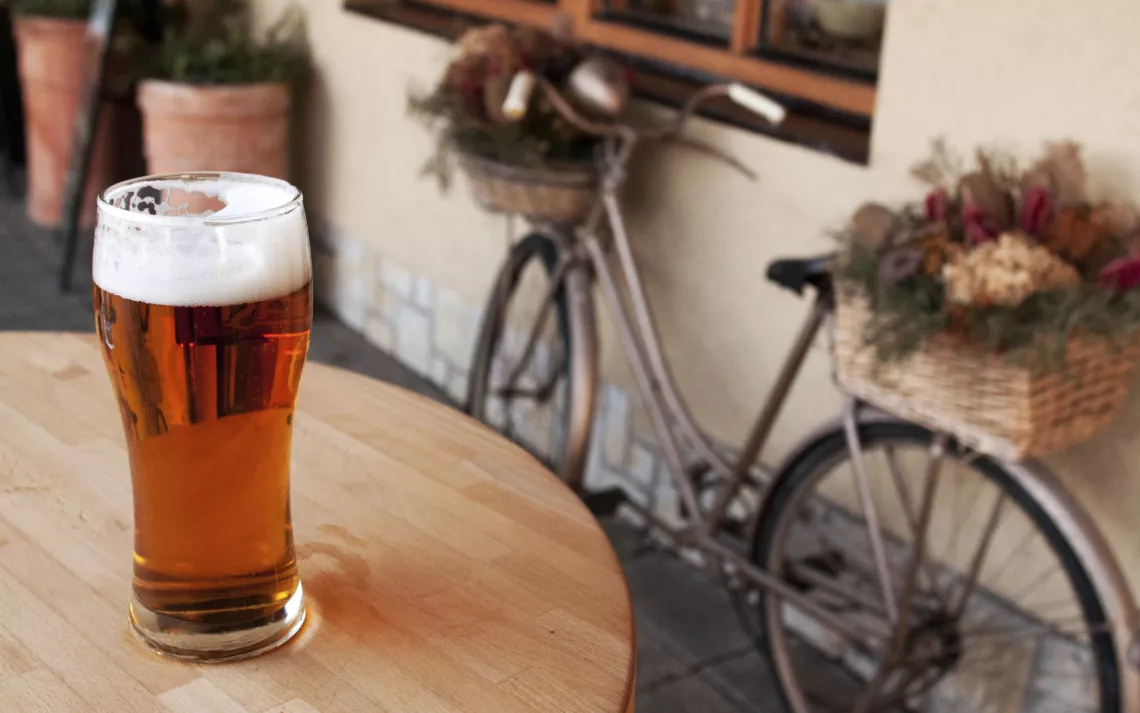How to Drink Responsibly
Helping the planet, pint by pint.

No one needs an excuse to drink good beer, but here's one anyhow: 2014 is the best year ever to find ecofriendly ales. Virtually nonexistent 20 years ago, green beer is now being cranked out by brewers of all sizes, from micro to mega.
"When I opened in 1996, I was barely able to find organic malt," says Ron Silberstein, who started San Francisco's ThirstyBear Brewing Co. and sits on the Good Food Awards Beer Committee. "But as more people use organic products, it has become easier to brew sustainably."
Microbreweries like ThirstyBear often have a drastically smaller carbon footprint than their giant competitors. On average, a locally brewed pint is 300 percent kinder to the planet than a bottle of beer that has traveled far. Microbrews make up just 7.8 percent of beers by volume, but the number of small breweries grew by 18 percent last year.
To even be considered for a Good Food Award, beer makers must recycle water, source locally, and not use genetically modified ingredients. To win, they have to be tasty, too.
While the market for easy-on-the-earth beer ingredients has grown—it helps that prices have dropped—it's still relatively minor. Silberstein admits that his commitment to staying organic limits the variety of beers he can make.
Another challenge for eco-brewers is recycling and conserving water. "It's the number-one ingredient in brewing," says Cheri Chastain, the sustainability manager at Sierra Nevada Brewing Co. "You can generate more energy, but water is that one thing you can't make."
Sierra Nevada's Chico, California, brewing plant has more than 10,000 solar panels and a big on-site water treatment facility—a setup envied by many smaller breweries.
Others are coming up with eco-solutions as varied as America's microbrews. Dave's BrewFarm in Wisconsin has "Jake," a wind-powered generator that delivers most of the brewery's power. Anderson Valley Brewing in Boonville, California, deploys goats to mow its grass.
"There's something new every day," Chastain says. "The industry is growing so quickly. It's really an exciting time."
Below are five of the Good Food Awards' winning beers (all are pictured above):
PORT CITY BREWING CO., Alexandria, Virginia
2014 GFA WINNER: Optimal Wit, 5% ABV ($6 for a pint). This traditional Belgian witbier is made from raw wheat and oats. It has notes of coriander, orange peel, and grains of paradise.
DESCHUTES BREWERY, Bend, Oregon
2014 GFA WINNER: Black Butte Porter, 5.2% ABV ($5 for a pint). Deschutes's flagship beer is hoppy up front with a roasted-chocolate finish.
BEAR REPUBLIC BREWING CO., Healdsburg, California
2014 GFA WINNER: Cafe Racer 15 Double IPA, 9.75% ABV ($8.50 for a 22-ounce bottle). Citrus and pine aromas mix with generous hops. Pair it with spicy foods and savory dishes.
VICTORY BREWING CO., Downingtown, Pennsylvania
2014 GFA WINNER: Helios Ale, 7.5% ABV ($5.30 for a 22-ounce bottle). A Belgian farmhouse ale by style, it finishes with flavors both honeyed and tart.
NINKASI BREWING CO., Eugene, Oregon
2014 GFA WINNER: Believer Double Red Ale, 6.9% ABV (About $5 for a 22-ounce bottle). Plentiful hops and dark malts. Drink it alongside pork, pizza, or chocolate.
 The Magazine of The Sierra Club
The Magazine of The Sierra Club






